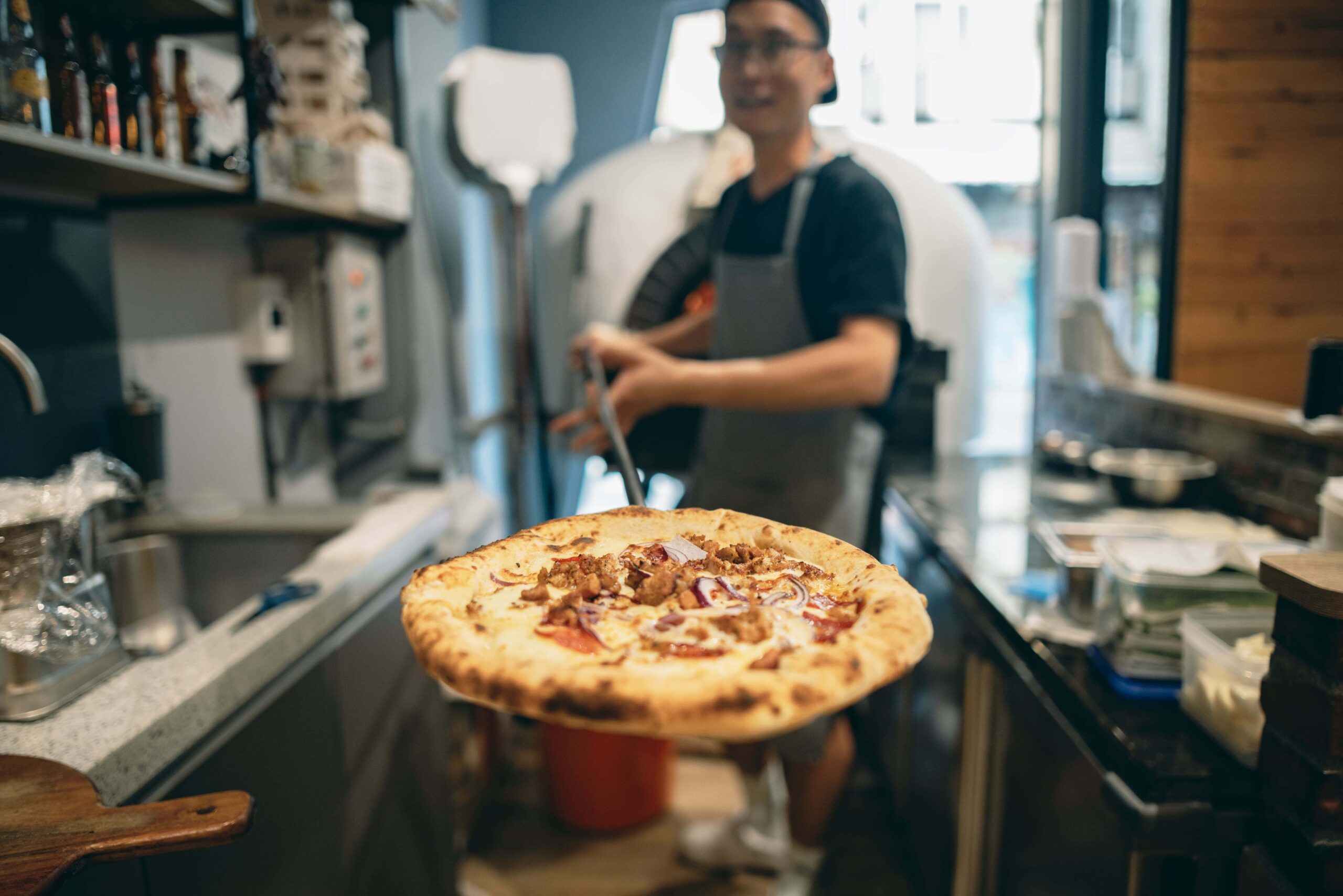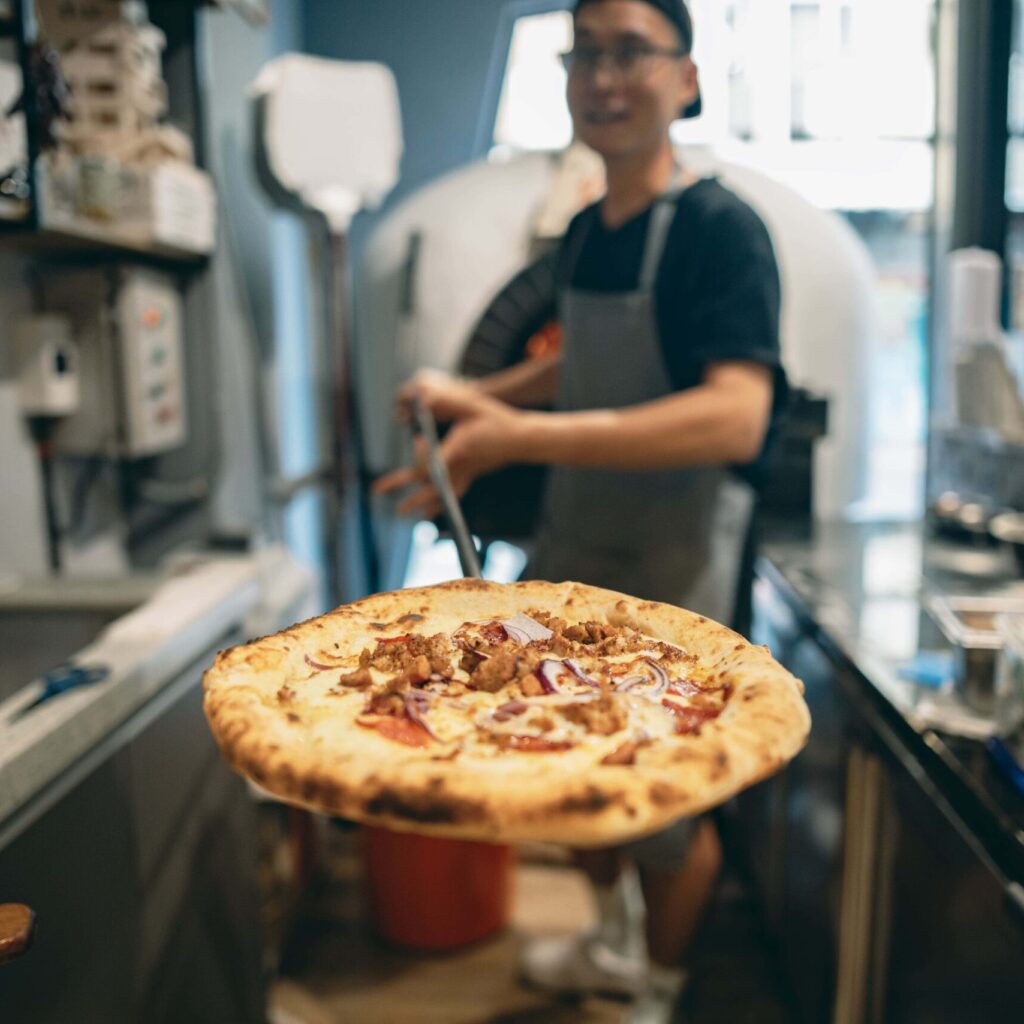Effective scheduling is the backbone of successful restaurant and quick-service restaurant (QSR) operations in Fairfield, California. In a competitive dining market where customer expectations are high and labor costs continue to rise, restaurant owners face unique challenges when it comes to managing their workforce efficiently. The right scheduling solution can make the difference between a thriving establishment and one that struggles with high turnover, inconsistent service, and reduced profits. Fairfield’s diverse dining scene, from fast-casual eateries near Solano Town Center to family restaurants along Texas Street, requires scheduling systems that can adapt to varying demand patterns while complying with California’s strict labor regulations.
Restaurant operators in Fairfield must navigate complex scheduling demands including rush hour staffing, weekend coverage, special events, and seasonal fluctuations—all while managing a predominantly part-time workforce with varying availability. Modern employee scheduling software offers solutions designed specifically for these challenges, providing tools that streamline operations, reduce labor costs, and improve employee satisfaction. For Fairfield restaurants looking to gain a competitive edge, implementing the right scheduling service isn’t just about convenience—it’s an essential business strategy that impacts everything from operational efficiency to employee retention and customer experience.
Understanding Fairfield’s Restaurant Scheduling Challenges
Restaurant and QSR managers in Fairfield face distinct scheduling challenges that affect both operational efficiency and compliance with local regulations. Understanding these challenges is the first step toward implementing effective scheduling solutions that address the specific needs of Fairfield’s food service industry.
- California Labor Law Compliance: Fairfield restaurants must navigate California’s stringent labor laws, including meal break requirements, overtime regulations, and predictive scheduling mandates that can result in penalties if not properly managed.
- Tourist and Local Traffic Fluctuations: With Fairfield’s proximity to Napa Valley and position along I-80, restaurants experience unpredictable traffic patterns influenced by tourism, events, and commuter flows.
- Diverse Workforce Management: Managing a mix of full-time, part-time, and student employees with varying availability and skill sets requires flexible scheduling systems.
- High Turnover Industry: The restaurant industry’s traditionally high turnover rates necessitate systems that can quickly onboard new staff and adjust schedules accordingly.
- Seasonal Business Fluctuations: Fairfield’s distinct seasons affect dining patterns, requiring staffing adjustments from summer tourist influxes to winter holiday rushes.
These challenges create scheduling complexities that manual systems struggle to address efficiently. Restaurant employee scheduling solutions designed for the unique demands of the food service industry can transform these challenges into opportunities for operational excellence. Modern scheduling services offer specialized features that help Fairfield restaurants maintain compliance while optimizing their workforce allocation based on historical data and predictive analytics.
Essential Features for Restaurant Scheduling Services
When evaluating scheduling services for your Fairfield restaurant or QSR, certain features are particularly valuable for addressing the unique needs of food service operations. The right combination of tools can dramatically improve your scheduling efficiency and staff satisfaction.
- Mobile Accessibility: Cloud-based scheduling with mobile apps allows staff to view schedules, request shifts, and communicate changes from anywhere—essential for a younger workforce that expects digital convenience.
- Shift Swapping Capabilities: Self-service shift marketplaces empower employees to trade shifts within manager-approved parameters, reducing no-shows and last-minute coverage issues.
- Labor Forecasting Tools: Predictive analytics that use historical data to forecast busy periods help Fairfield restaurants schedule appropriate staffing levels for different times of day and week.
- Real-time Communication: Integrated messaging systems allow managers to quickly communicate with individuals or teams about schedule changes or important updates.
- Compliance Monitoring: Automated tools that track break requirements, overtime thresholds, and other California labor regulations help Fairfield restaurants avoid costly violations.
Additionally, look for scheduling services that offer customizable templates for different service types (breakfast, lunch, dinner) and special events that are common in Fairfield’s diverse dining scene. Key scheduling features should include the ability to tag employees by skill level and station expertise, ensuring you have the right mix of experienced and newer staff during each shift. Integration capabilities with your POS system and payroll provider will streamline operations further, reducing administrative time and potential errors in data transfer between systems.
California Labor Law Compliance for Fairfield Restaurants
California has some of the most employee-friendly labor laws in the nation, creating a complex compliance landscape for Fairfield restaurant operators. Effective scheduling services can help restaurants navigate these regulations while avoiding costly penalties and potential litigation.
- Meal and Rest Break Tracking: California requires employers to provide 30-minute meal breaks for shifts over 5 hours and 10-minute rest breaks for every 4 hours worked—scheduling software can automate break tracking and send compliance alerts.
- Split Shift Premium Pay: When employees work non-consecutive hours in a day, California law may require additional compensation—scheduling tools can flag these scenarios and calculate appropriate premiums.
- Predictive Scheduling Requirements: While not yet statewide, predictive scheduling laws requiring advance notice of schedules are expanding in California—modern scheduling systems help maintain compliance with these emerging regulations.
- Minor Work Restrictions: With many Fairfield restaurants employing high school students, scheduling software can enforce hour restrictions for employees under 18, particularly on school days.
- Overtime Calculation: California’s daily overtime rules (over 8 hours/day) differ from federal standards—automated scheduling tools can help prevent unintended overtime and calculate proper rates.
Modern labor compliance features in scheduling software provide Fairfield restaurant managers with built-in safeguards against common violations. The best solutions include customizable rule sets that can be updated as regulations change. They also maintain comprehensive records of schedules, breaks, and work hours that can be invaluable during labor audits or disputes. By implementing scheduling services with strong compliance capabilities, Fairfield restaurants can redirect focus from administrative worries to enhancing customer experience and food quality.
Cost Optimization Through Smart Scheduling
For Fairfield restaurants operating on tight margins, labor cost control is essential for profitability. Advanced scheduling services offer sophisticated tools that help optimize staffing levels to match business needs while controlling expenses.
- Sales-to-Labor Ratio Monitoring: Intelligent scheduling systems can track labor costs as a percentage of sales in real-time, allowing managers to make adjustments to maintain target ratios during different service periods.
- Dynamic Staffing Models: Data-driven scheduling that adjusts staffing based on historical patterns, weather forecasts, and local events helps Fairfield restaurants avoid both costly overstaffing and service-damaging understaffing.
- Overtime Management: Proactive overtime alerts and thresholds prevent unexpected labor cost spikes by identifying potential overtime situations before they occur.
- Skill-Based Scheduling: Matching employee skills to specific stations or tasks increases efficiency and reduces the total labor hours needed to maintain service standards.
- Reduced Administrative Time: Automated scheduling reduces the hours managers spend creating and adjusting schedules, allowing them to focus on revenue-generating activities instead.
The financial benefits of implementing advanced scheduling systems extend beyond direct labor cost savings. Effective cost management through scheduling also impacts employee retention, as fair and consistent schedules improve job satisfaction and reduce costly turnover. Additionally, proper staffing levels directly affect customer experience—understaffed shifts lead to poor service and lost repeat business, while overstaffed periods unnecessarily inflate costs. For Fairfield restaurants, finding this balance is particularly important given the competitive dining market and fluctuating customer traffic patterns typical of the area.
Enhancing Employee Satisfaction and Retention
In Fairfield’s competitive restaurant labor market, retaining quality staff is a significant challenge. Modern scheduling services offer features that can dramatically improve employee satisfaction and reduce turnover by giving staff more control and predictability in their work lives.
- Preference-Based Scheduling: Systems that capture and honor employee availability and shift preferences lead to more satisfied staff and fewer schedule conflicts.
- Work-Life Balance Support: Scheduling tools that promote balance between work and personal time help reduce burnout in the demanding restaurant environment.
- Schedule Consistency: Advanced scheduling systems can create more consistent patterns, allowing employees to better plan their lives outside of work.
- Self-Service Options: Empowering employees to request time off, swap shifts, and pick up extra hours through mobile apps provides valuable flexibility.
- Early Access to Schedules: Publishing schedules further in advance gives employees more time to plan around work commitments, reducing last-minute conflicts.
Research consistently shows that schedule-related issues are among the top reasons for restaurant employee turnover. By implementing scheduling systems that prioritize flexibility and employee input, Fairfield restaurants can significantly improve retention rates. This directly impacts the bottom line, as the cost of recruiting and training new employees can range from $1,500 to $5,000 per position. Additionally, experienced staff provide better customer service, further enhancing business performance. For restaurants near Fairfield’s business districts that compete for the same labor pool, offering employee-friendly scheduling can be a decisive advantage in attracting and keeping the best talent.
Mobile Scheduling Solutions for Restaurant Teams
The restaurant workforce in Fairfield skews younger and is increasingly mobile-first in their technology preferences. Implementing scheduling services with robust mobile capabilities meets these expectations while improving operational efficiency.
- Instant Schedule Access: Mobile scheduling apps allow staff to view their current and upcoming shifts from anywhere, reducing confusion and missed shifts.
- Real-Time Notifications: Push notifications for schedule changes, shift opportunities, or manager announcements ensure team members stay informed even when they’re not at work.
- Availability Updates On-The-Go: Staff can update their availability or request time off directly from their smartphones, streamlining communication with management.
- Mobile Shift Trading: User-friendly interfaces for shift swapping and picking up open shifts help restaurants in Fairfield maintain coverage despite last-minute schedule conflicts.
- GPS-Enabled Clock-In: Location-verified time tracking ensures staff are actually on-site when clocking in for shifts, preventing time theft and buddy punching.
For Fairfield’s diverse restaurant scene, from casual eateries to fine dining establishments, mobile scheduling access is no longer a luxury but an expectation among staff. Modern scheduling services offer cross-platform compatibility, ensuring all employees can access schedules regardless of whether they use iOS or Android devices. Some advanced systems also incorporate team messaging features that create virtual staff rooms where important information can be shared and discussed, enhancing team cohesion even when employees are working different shifts throughout the week.
Integration with Restaurant Management Systems
For maximum efficiency, scheduling services should seamlessly connect with other systems used in your Fairfield restaurant. Integration capabilities eliminate double data entry and provide a more holistic view of your operations.
- POS System Connectivity: Integrations with popular restaurant POS systems allow schedules to be created based on sales data, ensuring appropriate staffing during projected busy periods.
- Payroll Software Synchronization: Direct payroll integration eliminates manual data transfer, reducing errors and ensuring employees are paid correctly for their hours worked.
- Inventory Management Coordination: Some advanced scheduling tools can align staffing with inventory levels and prep requirements, optimizing kitchen operations.
- Time and Attendance Tracking: Integrated clock-in systems verify that scheduled employees are present and working their assigned shifts.
- Training and Certification Tracking: Systems that monitor employee qualifications ensure that properly trained staff are scheduled for specialized roles or equipment.
The power of integrated systems becomes particularly evident when looking at the complete operational picture. For example, when scheduling is connected to both POS and inventory systems, managers can see correlations between staffing levels, sales performance, and food costs. This holistic view enables data-driven decisions that optimize all aspects of the restaurant’s performance. For Fairfield restaurants dealing with seasonal fluctuations and variable customer patterns, these insights can be transformative, allowing for precise adjustments to staffing models based on actual business metrics rather than guesswork.
Implementing Scheduling Services in Fairfield Restaurants
Successfully transitioning to a new scheduling system requires careful planning and change management. For Fairfield restaurant operators, following a structured implementation approach will minimize disruption and maximize adoption.
- Needs Assessment: Evaluate your specific scheduling challenges, considering factors like restaurant size, service type, and staff demographics before selecting a solution.
- Staff Involvement: Include key employees in the selection process to ensure the system meets their needs and to create early champions for the new technology.
- Phased Implementation: Start with basic scheduling features before advancing to more complex functionality like forecasting and analytics.
- Comprehensive Training: Invest time in properly training both management and staff on the new system, utilizing vendor-provided resources and creating restaurant-specific guides.
- Data Migration Planning: Carefully transfer employee information, availability preferences, and historical scheduling data to ensure continuity.
During implementation, communication is key to managing change effectively. Clearly explain to your team how the new scheduling system will benefit them personally, not just the business. Create support resources that employees can reference when questions arise, and designate “super users” who can help their colleagues navigate the new system. For Fairfield restaurants with multiple locations or franchise operations, consider piloting the system in one location before rolling it out more broadly. This approach allows for troubleshooting and refinement of processes before full-scale implementation.
Measuring ROI from Restaurant Scheduling Services
To justify the investment in scheduling services, Fairfield restaurant operators should establish clear metrics for measuring return on investment. Tracking specific key performance indicators will demonstrate the business impact of improved scheduling practices.
- Labor Cost Percentage: Monitor how scheduling optimization affects your labor costs as a percentage of sales, with industry standards suggesting this should typically range from 25-35% for restaurants.
- Schedule Creation Time: Measure the reduction in administrative hours spent creating and managing schedules, which can often decrease by 70-80% with automated systems.
- Employee Turnover Rate: Track changes in staff retention, as improved scheduling typically reduces turnover by addressing a primary pain point for restaurant employees.
- Overtime Reduction: Quantify the decrease in unplanned overtime expenses, which can be substantial when using systems with predictive scheduling capabilities.
- Compliance Violation Reduction: Calculate savings from avoiding penalties associated with labor law violations, which can range from hundreds to thousands of dollars per incident in California.
Beyond these direct metrics, consider the impact on customer experience and satisfaction. Proper scheduling ROI measurement should include improved service quality indicators, as appropriate staffing levels directly affect customer wait times and service quality. For Fairfield restaurants competing in a crowded market, these customer experience improvements can translate to higher repeat business and better online reviews. Most restaurants find that advanced scheduling services pay for themselves within months through labor cost optimization alone, with additional benefits continuing to accrue through improved operations and employee satisfaction.
Selecting the Right Scheduling Service for Your Fairfield Restaurant
With numerous scheduling solutions available, choosing the right one for your Fairfield restaurant requires careful evaluation of your specific needs, budget constraints, and operational goals. Consider these factors when making your selection:
- Scalability Potential: Select a solution that can grow with your business, whether you’re planning to expand to multiple Fairfield locations or add new service offerings.
- Restaurant-Specific Features: Prioritize systems designed for restaurants rather than general-purpose scheduling tools, as they’ll better address industry-specific challenges.
- User Experience Quality: Evaluate the intuitiveness of both manager and employee interfaces—adoption rates will be higher with user-friendly systems.
- Support and Training Resources: Consider the quality of customer support, availability of training materials, and whether the vendor offers personalized onboarding assistance.
- Total Cost Structure: Look beyond the base subscription price to understand all costs, including setup fees, additional user charges, and costs for premium features.
Don’t hesitate to request demonstrations and free trials from multiple providers to compare features in real-world scenarios. Scheduling solutions designed for hospitality often provide specialized features like tip pool management and server section assignment capabilities that general scheduling tools lack. For Fairfield restaurant operators, local regulations and market conditions make California-specific expertise valuable—look for providers with experience serving restaurants in the state who understand the unique compliance requirements. Finally, seek input from fellow restaurateurs in the Fairfield area about their experiences with different scheduling services, as their insights can provide valuable real-world perspectives.
Future Trends in Restaurant Scheduling Technology
To future-proof your restaurant operations in Fairfield, it’s worth considering emerging trends in scheduling technology that could provide additional advantages in the coming years.
- AI-Powered Scheduling: Advanced AI algorithms are increasingly capable of creating optimal schedules based on multiple variables, including employee preferences, skills, historical sales data, and even weather forecasts.
- Predictive Analytics: More sophisticated forecasting tools can help Fairfield restaurants anticipate staffing needs for special events, seasonal changes, and even unexpected situations like weather impacts.
- Integration with Gig Economy Platforms: Some scheduling systems are beginning to incorporate capabilities for quickly finding qualified temporary staff to fill last-minute openings.
- Biometric Time Tracking: Facial recognition and fingerprint verification are becoming more common for secure and accurate time tracking, eliminating buddy punching.
- Automated Compliance Updates: As California labor laws continue to evolve, scheduling systems with automatic regulatory updates will ensure continued compliance without manual intervention.
For forward-thinking Fairfield restaurant operators, staying informed about technology trends provides a competitive advantage. Consider how these emerging capabilities might address your specific operational challenges. For example, restaurants near Fairfield’s business districts might benefit from AI-powered forecasting that can predict lunch rush variations based on local business events and patterns. Similarly, establishments that experience extreme seasonal fluctuations could leverage gig economy integrations to maintain flexible staffing during peak periods without overstaffing during slower times.
Effective restaurant scheduling is no longer just about filling shifts—it’s a strategic business function that directly impacts profitability, employee satisfaction, and customer experience. For Fairfield restaurants navigating California’s complex labor regulations and competitive market conditions, implementing the right scheduling service offers significant advantages. From labor cost optimization and compliance assurance to improved employee retention and operational efficiency, the benefits extend throughout the business. By carefully selecting and implementing a restaurant-specific scheduling solution that addresses your unique needs, your Fairfield establishment can transform scheduling from an administrative burden into a competitive advantage.
The most successful implementations involve not just selecting the right technology but also embracing the cultural shift toward more collaborative and flexible scheduling practices. Staff who feel their time is valued through fair, consistent scheduling practices become more engaged employees who provide better customer service. For Fairfield’s restaurant owners and managers, this combination of improved operations and enhanced employee experience translates directly to the bottom line through lower costs, reduced turnover, and satisfied customers who return again and again.
FAQ
1. What are the typical costs of scheduling software for a small restaurant in Fairfield?
Scheduling software for small restaurants in Fairfield typically ranges from $2-5 per employee per month, with most providers offering tiered pricing based on employee count and feature requirements. Basic scheduling systems start around $30-50 monthly for smaller operations, while more comprehensive solutions with advanced features like labor forecasting, POS integration, and compliance tools can range from $100-300 monthly. Many providers offer free trials and demo periods, allowing Fairfield restaurant owners to test functionality before committing. Some solutions like Shyft offer various pricing options designed specifically for small businesses, with the ability to scale as your restaurant grows.
2. How can scheduling software help my Fairfield restaurant comply with California’s meal and rest break requirements?
Advanced scheduling software helps Fairfield restaurants comply with California’s strict meal and rest break requirements through several automated mechanisms. These systems can be programmed with California-specific rules (30-minute meal breaks for shifts over 5 hours, 10-minute rest breaks for every 4 hours worked) and will automatically generate compliant schedules. During shifts, the software can send real-time alerts to managers when employees are approaching break deadlines, and some systems require employees to confirm break completion. Comprehensive reporting features maintain documentation of all breaks taken, providing valuable records in case of audit or dispute. The best solutions also adapt to changing regulations, ensuring your restaurant remains compliant even as California’s labor laws evolve.
3. What integrations should I prioritize when selecting scheduling software for my Fairfield QSR?
For Fairfield QSRs, the most valuable integrations to prioritize are with your Point of Sale (POS) system, payroll provider, and time and attendance tracking system. POS integration allows scheduling based on sales forecasts and labor percentage targets, creating efficiency-optimized schedules. Payroll system integration eliminates manual data entry, reducing errors and ensuring employees are paid correctly for their hours. Time and attendance integration verifies that employees are working their scheduled shifts and automatically calculates hours for payroll. Additional beneficial integrations include inventory management systems (to align staffing with food prep needs), accounting software, and employee communication platforms. Before selecting a scheduling solution, confirm it offers native integrations or API capabilities for your existing restaurant systems to ensure seamless data flow.
4. How long does it typically take to implement a new scheduling system in a restaurant?
Implementation timelines for restaurant scheduling systems typically range from 2-8 weeks, depending on restaurant size, complexity, and the extent of customization required. For a small to medium-sized Fairfield restaurant, basic implementation can often be completed in 2-3 weeks. The process typically begins with system setup and configuration (1 week), followed by data migration of employee information and historical scheduling data (3-5 days). Staff and management training generally requires 1-2 weeks, with additional time needed for testing and adjustments. Cloud-based systems typically deploy faster than on-premise solutions. For multi-location operations or restaurants requiring extensive customization or integrations with other systems, implementation may extend to 6-8 weeks. Most providers offer implementation support services to streamline the process.
5. How can scheduling software help with managing part-time student employees common in Fairfield restaurants?
Scheduling software offers several specialized features for managing part-time student employees commonly employed in Fairfield restaurants. These systems allow students to input their class schedules and update availability each semester, preventing scheduling conflicts. Flexible availability management accommodates changing exam periods and school events, while mobile apps enable students to request shifts or time off without visiting the restaurant. Advanced systems can enforce hour restrictions for students and track academic performance incentives that some restaurants offer. Additionally, shift marketplace features allow students to easily trade shifts when academic priorities change, reducing no-shows and scheduling headaches for managers. Finally, these systems can manage school break transitions, allowing restaurants to quickly adjust when students return to or leave the Fairfield area during academic holidays.












